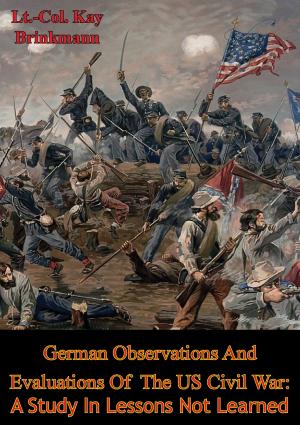A History Of The Organizational Development Of The Continental Artillery During The American Revolution
Nonfiction, History, Military, Other, United States, Americas, 20th Century| Author: | Major William C. Pruett US Army | ISBN: | 9781782899549 |
| Publisher: | Golden Springs Publishing | Publication: | November 6, 2015 |
| Imprint: | Golden Springs Publishing | Language: | English |
| Author: | Major William C. Pruett US Army |
| ISBN: | 9781782899549 |
| Publisher: | Golden Springs Publishing |
| Publication: | November 6, 2015 |
| Imprint: | Golden Springs Publishing |
| Language: | English |
The thesis of this study is that the Continental artillery in the American Revolution, despite its ad hoc beginning and wartime challenges, gradually developed into a professional organization by the end of the war. Rather than operational history of the organization, its focus is on the growth of the organization over time, in terms of its cultural beginnings, its doctrinal development, and the leadership and career paths of some of its middle ranking leaders. The first chapter lays out the structural framework and statutory authorizations for the organization. The second chapter describes its early cultural shift from its pre-war legacy of provincialism to a trajectory toward professionalism. This chapter uses a cultural analysis to argue that Washington’s decision to replace the aged Richard Gridley with Henry Knox as the commander of the Continental artillery ushered in a cultural shift away from an older provincial organizational culture to one that sought professionalism. The third chapter portrays the development of a battlefield tactical doctrine described in books that gradually took hold in informal ways. It takes a comparative theory and practice approach to argue that the kernel of an emerging doctrine existed in available European books and from those kernels, a consistent and effective doctrine developed over time. The fourth chapter uses a collective biographical approach to show organizational development in the careers of its middle ranking leaders. The concluding chapter summarizes findings and ties the professionalization of the corps of artillery to the military establishments of the new republic.
The thesis of this study is that the Continental artillery in the American Revolution, despite its ad hoc beginning and wartime challenges, gradually developed into a professional organization by the end of the war. Rather than operational history of the organization, its focus is on the growth of the organization over time, in terms of its cultural beginnings, its doctrinal development, and the leadership and career paths of some of its middle ranking leaders. The first chapter lays out the structural framework and statutory authorizations for the organization. The second chapter describes its early cultural shift from its pre-war legacy of provincialism to a trajectory toward professionalism. This chapter uses a cultural analysis to argue that Washington’s decision to replace the aged Richard Gridley with Henry Knox as the commander of the Continental artillery ushered in a cultural shift away from an older provincial organizational culture to one that sought professionalism. The third chapter portrays the development of a battlefield tactical doctrine described in books that gradually took hold in informal ways. It takes a comparative theory and practice approach to argue that the kernel of an emerging doctrine existed in available European books and from those kernels, a consistent and effective doctrine developed over time. The fourth chapter uses a collective biographical approach to show organizational development in the careers of its middle ranking leaders. The concluding chapter summarizes findings and ties the professionalization of the corps of artillery to the military establishments of the new republic.






![Cover of the book Staff Ride Handbook For The Battle Of Chickamauga, 18-20 September 1863 [Illustrated Edition] by Major William C. Pruett US Army](https://www.kuoky.com/images/2014/august/300x300/9781782895275-5w82_300x.jpg)


![Cover of the book John Bell Hood’s Division In The Battle Of Chickamauga: A Historical Analysis [Illustated Edition] by Major William C. Pruett US Army](https://www.kuoky.com/images/2014/august/300x300/9781782894919-PTun_300x.jpg)

![Cover of the book Red Badge of Courage [Illustrated Edition] by Major William C. Pruett US Army](https://www.kuoky.com/images/2013/february/300x300/9781908902757-OBfC_300x.jpg)



